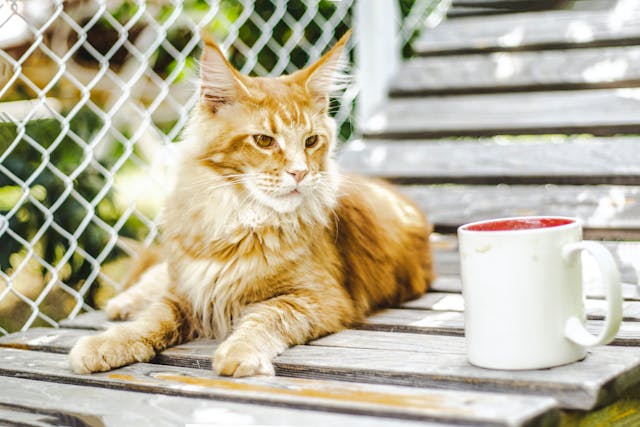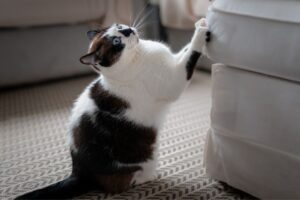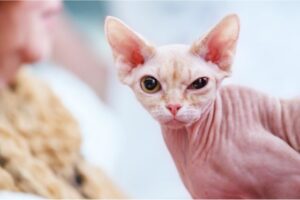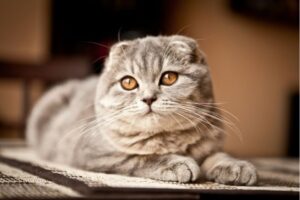Cats have a way of stealing our hearts with their unique personalities and charming antics. For cat enthusiasts and prospective cat parents, the wide array of cat breeds can be both exciting and overwhelming.
In this comprehensive guide, we will delve into the captivating histories and distinctive traits of the 10 most popular cat breeds that have enamored cat enthusiasts worldwide. From the opulent Persian to the spirited Exotic Shorthair, each breed weaves its own unique narrative, contributing to the rich tapestry of feline diversity.
The Persian Cat: A Fluffy Classic
Characteristics and History
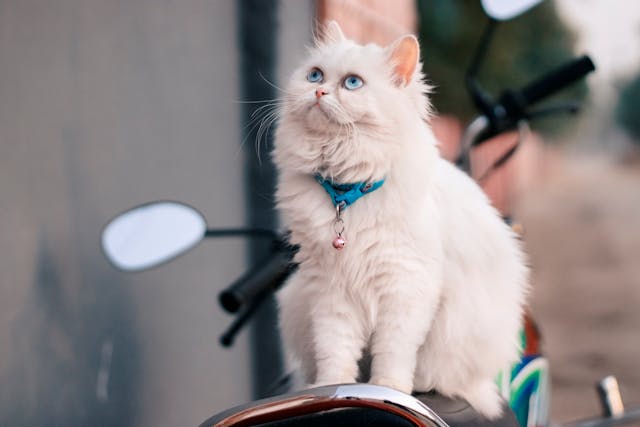
The Persian cat, with its sumptuous, long coat and iconic flat face, boasts a regal history that extends back to ancient Persia, where it was cherished for its luxurious appearance. Introduced to Europe in the 1600s, Persians became a symbol of affluence and sophistication.
Queen Victoria’s fondness for these feline aristocrats further fueled their popularity. Persians exhibit a distinct color palette, including solid colors, bicolor, and Himalayan patterns, adding to the allure of their aesthetic diversity. Their compact bodies and round faces contribute to their doll-like appearance, making them the epitome of feline elegance.
Why People Love Persians
Beyond their aristocratic past, Persians have captured the hearts of cat enthusiasts for their serene disposition. Their elegant, flowing coat and distinctive features make them a living work of art. As indoor companions, they thrive on the quiet companionship of their human counterparts, creating a bond that withstands the test of time.
Persian cats often have large, expressive eyes that come in various colors, enhancing their ability to communicate emotions. Whether it’s their laid-back demeanor or their regal gaze, Persians have an uncanny ability to form deep connections with their owners, earning them a spot as one of the most beloved cat breeds globally.
The Siamese Cat: Elegant and Vocal
Characteristics and History

The Siamese cat, renowned for its striking color points and sapphire-blue eyes, traces its roots back to ancient Siam (now Thailand). These royal feline companions were esteemed, with tales of them guarding treasures and residing in temples. In the 19th century, they made their way to the Western world, captivating cat lovers with their unique beauty.
Siamese cats boast a sleek, medium-sized body with a distinctive coat that showcases darker color points on their ears, face, paws, and tail, creating a striking contrast. Their almond-shaped blue eyes, a hallmark of the breed, exude intelligence and curiosity. The Siamese coat color is temperature-sensitive, a fascinating trait that adds an extra layer of intrigue to their already captivating appearance.
The Siamese Personality
Siamese cats are not merely a visual delight; their vocal and affectionate nature sets them apart. They form deep bonds with their human companions and are known for expressing their thoughts through a range of vocalizations.
This dynamic interaction adds an extra layer of charm to the Siamese allure. Siamese cats are highly social and enjoy being involved in their owner’s daily activities. Their playful nature persists well into adulthood, and they often develop a strong bond with one particular person, earning them a reputation as loyal and loving companions.
The Maine Coon: The Gentle Giant
Characteristics and History

The Maine Coon, often dubbed the “gentle giant,” is an American breed with a history as intriguing as its appearance. Legend has it that these cats are descendants of Marie Antoinette’s pets, who were shipped to the United States before her unfortunate fate in France.
Regardless of their origin, Maine Coons became an official breed in the late 1800s, gaining recognition for their size and friendly demeanor. Maine Coon cats showcase a robust and muscular physique, with tufted ears, bushy tails, and tufted paws adding to their majestic appearance. Their semi-longhair coat is water-resistant and comes in an array of colors, patterns, and tabby variations, contributing to the breed’s visual diversity.
The Ideal Family Cat
Maine Coons are renowned for their friendly disposition, making them an excellent choice for families. Their tufted ears, bushy tails, and tufted paws contribute to their majestic appearance. These cats enjoy the company of children and other pets, embodying the role of an ideal family companion.
Maine Coons are often referred to as “gentle giants” not only due to their large size but also because of their gentle and amiable nature. They thrive on human interaction and are known for their intelligence, making them easy to train for various activities, including walking on a leash or playing fetch.
The Bengal Cat: A Wild Aesthetic
Characteristics and History
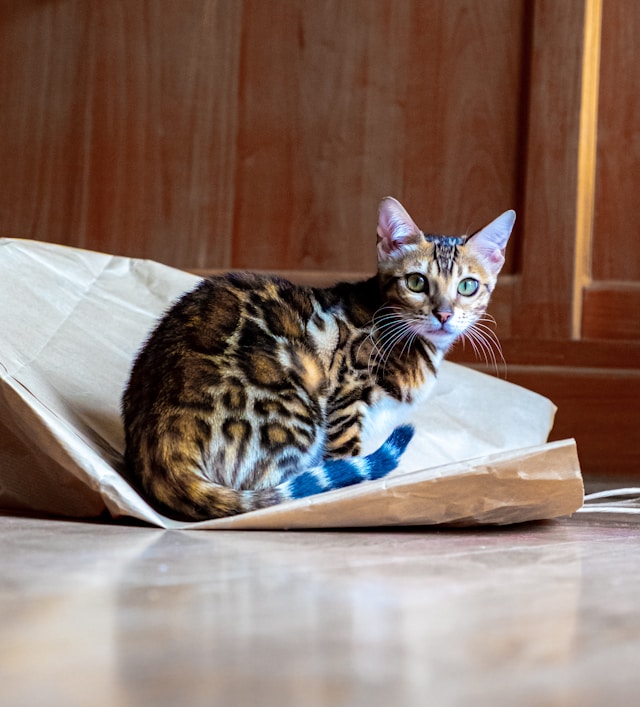
If you’re drawn to the wild side of felines, the Bengal cat promises a touch of the exotic in your home. Originating from the hybridization of domestic cats with the Asian leopard cat, Bengals boast a striking spotted or marbled coat that resembles their wild ancestors. Bengals are medium to large-sized cats with sleek and muscular bodies, adorned with distinctive coat patterns that set them apart.
Their coat colors can range from brown and gold to silver, and they often have a glittery sheen that adds to their allure. Bengals exhibit a unique trait called “rosetting,” where their spots form a pattern similar to that of wild leopards, creating a visually stunning and wild-like appearance.
Unusual Features of Bengals
Bengals are not your ordinary house cats; they bring an element of the wild into domestic life. Known for their love of water and interactive play, Bengals maintain a spirited energy that captivates those seeking a dynamic and engaging feline companion. Their unique coat patterns further emphasize their extraordinary and untamed aesthetic.
Bengals are highly intelligent and require mental stimulation, making them suitable for owners who are willing to engage in interactive play and provide environmental enrichment. Their playful and energetic nature makes them adept at learning tricks and even walking on a leash, showcasing their versatility as engaging and entertaining pets.
The Ragdoll: A True Companion
Characteristics and History
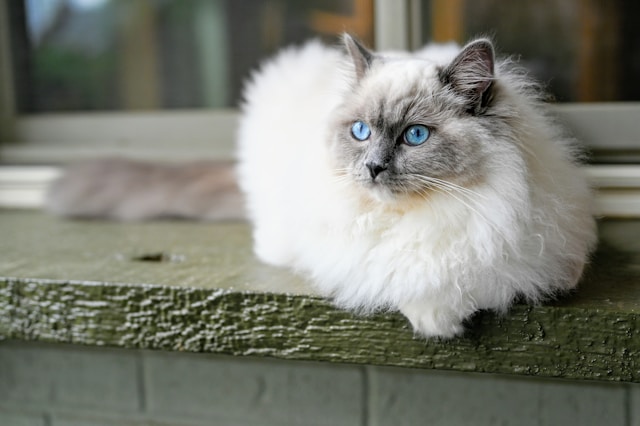
The Ragdoll, hailing from California in the 1960s, is not just a cat but a true companion. Developed by breeder Ann Baker, Ragdolls have a captivating history that includes the creation of a breed characterized by its tendency to go limp when picked up, as if made of soft fabric. Ragdoll cats are known for their large size, semi-longhair coat, and striking blue eyes.
They exhibit a distinctive behavior known as “going limp” or “flopping,” making them exceptionally relaxed when held, a trait that adds to their appeal as loving companions. The breed’s name itself reflects their tendency to become completely relaxed, resembling a limp doll when cradled in their owner’s arms.
Their Unique Behavior
Ragdolls are celebrated for their docile nature and tendency to go limp when held, a behavior that adds a delightful touch to their charm. Their large size and striking blue eyes make them stand out, while their gentle disposition and affectionate nature make them ideal companions for those seeking a cat that is both endearing and relaxed.
Ragdolls thrive on human interaction and often seek out their owners for companionship. They are known to be social cats that enjoy being part of the family, making them suitable for households with children and other pets. Their calm demeanor and willingness to be handled make them well-suited for owners seeking a laid-back and affectionate feline companion.
The Scottish Fold: Ears with a Twist
Characteristics and History
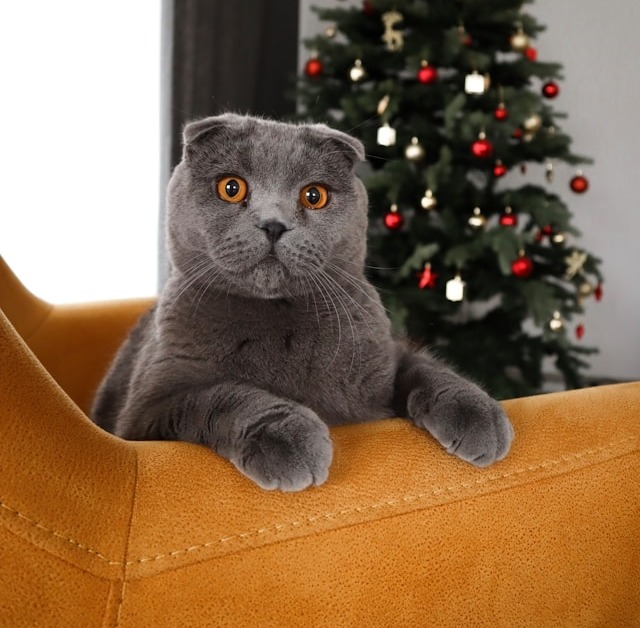
The Scottish Fold’s distinctive folded ears contribute to its undeniable charm, but it’s the breed’s intriguing genetic history that truly sets it apart. Originating in Scotland in the 1960s, the first Scottish Fold, named Susie, was discovered on a farm. This unique genetic mutation led to the development of a breed known for its distinctive ear shape.
Scottish Folds showcase a medium to large-sized body with a round face and a plush, dense coat. Their most distinctive feature is, of course, their folded ears, which give them an appearance that is both cute and unique. While the folded ear trait is the breed’s most notable characteristic, Scottish Folds also come in various coat colors and patterns, adding to their visual appeal.
The Folded Ear Gene
The folded ears of Scottish Folds are the result of a natural genetic mutation that affects cartilage development. Despite initial concerns about potential hearing issues, Scottish Folds hear just as well as other cats. Their folded ears, combined with their sweet expressions, add an extra layer of fascination to this charming breed.
The folded ear gene is inherited dominantly, meaning that even if only one parent carries the gene, some kittens in the litter may inherit the trait. However, not all Scottish Folds have folded ears, as the breed also includes “Scottish Straights” with normal ear appearance. This genetic diversity allows for a range of adorable looks within the breed.
The Sphynx: Beauty in the Nude
Characteristics and History
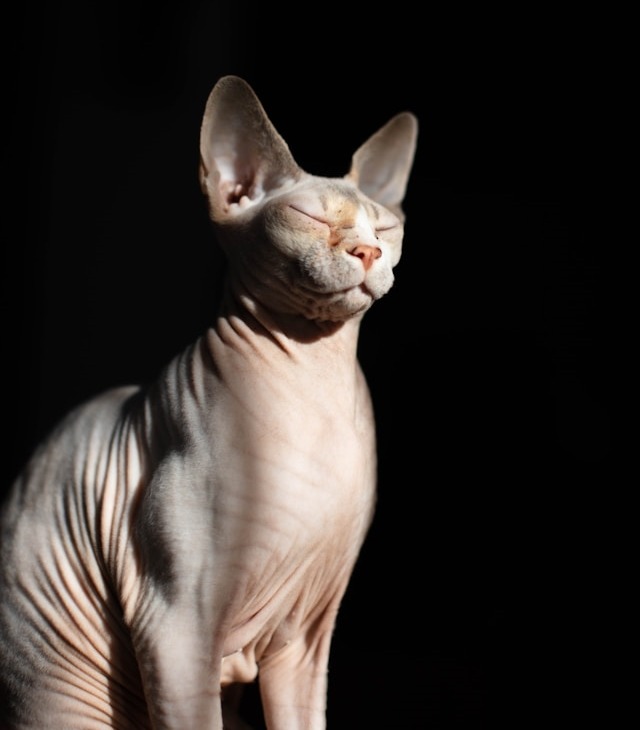
The Sphynx cat, with its hairless appearance, is a breed that challenges conventional notions of feline beauty. Contrary to popular belief, these cats are not completely hypoallergenic. Originating from the discovery of naturally hairless cats in the mid-20th century, the Sphynx quickly gained attention for its distinctive look.
Sphynx cats exhibit a medium to large-sized body with prominent cheekbones and large, lemon-shaped eyes. Their lack of fur reveals a warm and soft-to-the-touch skin that comes in various colors and patterns, showcasing their individuality. Despite their hairless appearance, Sphynx cats require regular bathing to remove oil buildup on their skin.
Myths and Realities about Sphynx Cats
The Sphynx, though hairless, requires special care to maintain its skin health. Far from being delicate, these cats are known for their warmth and affectionate nature. While myths persist about their vulnerability to illness, Sphynx cats are not more prone to health issues than other breeds. Their lack of fur means they are susceptible to temperature changes, requiring owners to provide warmth and protection from direct sunlight.
Sphynx cats are also known to seek out warm spots in the home, including cuddling with their owners to maintain body heat. Contrary to common misconceptions, Sphynx cats are not completely hypoallergenic, as their skin still produces allergenic proteins. However, many individuals with cat allergies find they can tolerate Sphynx cats more than other breeds.
The Abyssinian: Energetic and Exotic
Characteristics and History
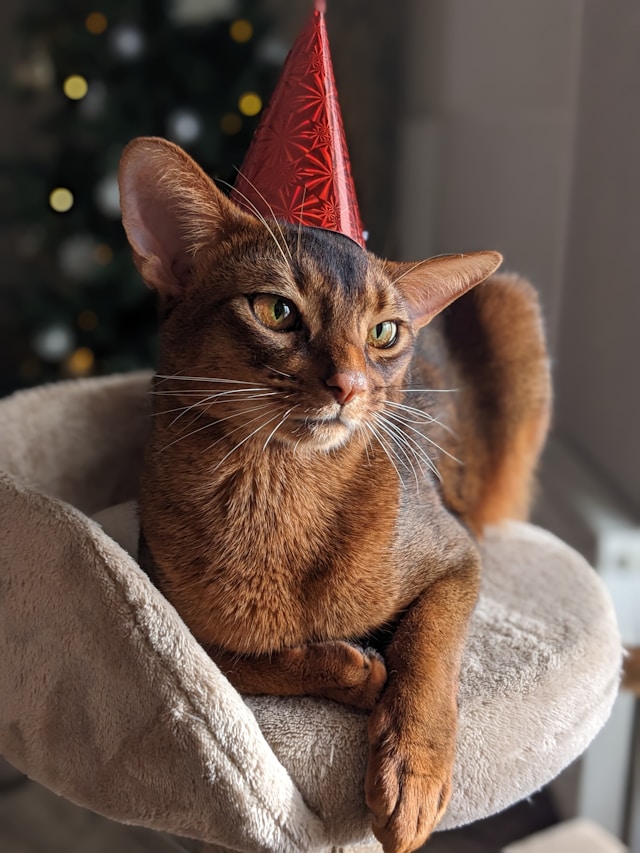
The Abyssinian cat, with its striking ticked coat and large, expressive ears, boasts an exotic allure rooted in ancient history. Originating from Ethiopia, formerly Abyssinia, these cats have been depicted in ancient Egyptian art, suggesting a lineage that spans thousands of years. Abyssinians showcase a slender and athletic body with a short, ticked coat that gives them a wild appearance.
Their large, almond-shaped eyes exude intelligence and curiosity, contributing to their captivating expression. The breed’s coat color is unique, featuring agouti (ticked) hairs that create a shimmering effect, enhancing the Abyssinian’s exotic allure.
Their Endearing Quirks
Abyssinians are not just visually striking; they bring energy and playfulness to the household. Known for their love of climbing and exploration, Abyssinians are ideal for homes with vertical spaces. Their affectionate nature and unique coat patterns contribute to their popularity among those seeking a lively and exotic feline companion.
Abyssinians are highly intelligent and thrive on mental stimulation. They enjoy interactive play and puzzle toys that challenge their minds. Despite their active nature, Abyssinians are also social cats that form strong bonds with their human companions. Their inquisitive and outgoing personalities make them a delightful addition to homes where they can engage in various activities, from climbing cat trees to playing interactive games.
The Ragamuffin: Sweet and Substantial
Characteristics and History

The Ragamuffin, a relative of the Ragdoll, offers a substantial and sweet addition to the feline world. Originating in the United States, these cats have become cherished for their large size and easygoing temperament. Ragamuffins exhibit a large and sturdy build with a semi-longhair coat that comes in a variety of colors and patterns.
Their expressive eyes, often in shades of blue and green, convey a gentle and affectionate nature. The breed’s history is intertwined with the Ragdoll, as Ragamuffins share similar characteristics but have their own distinct standards and variations.
Ragamuffins as Companions
Ragamuffins are gentle giants that thrive on companionship. Their substantial size and plush coats make them not only visually appealing but also incredibly soft to the touch. They are known for their laid-back attitude and enjoyment of being part of the family, adding a warm and comforting presence to any household.
Ragamuffins are affectionate and sociable, often seeking out the company of their owners. They are known to follow their human companions from room to room and enjoy being involved in daily activities. Ragamuffins are suitable for families, as they get along well with children and other pets, embodying the essence of a companionable feline breed.
The Exotic Shorthair: Persian’s Playful Cousin
Characteristics and History
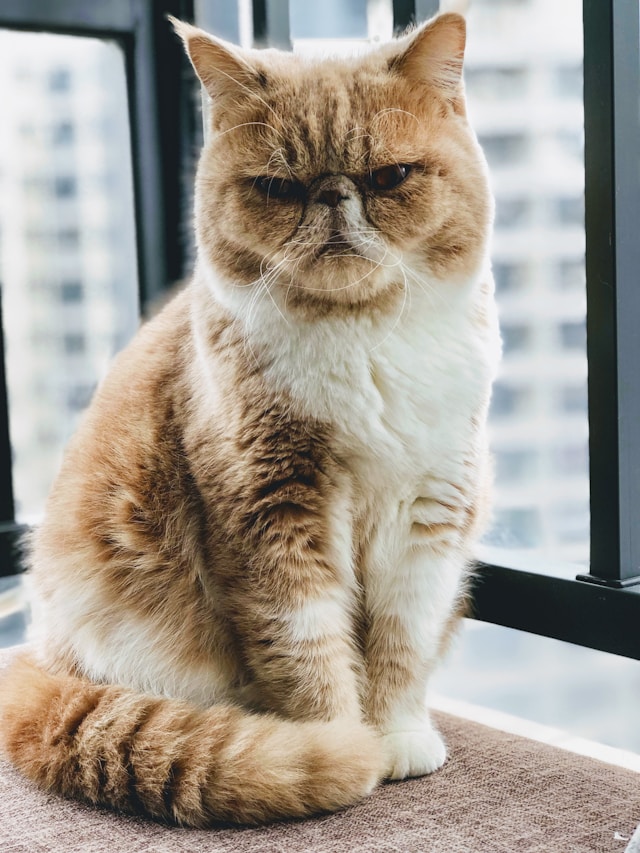
The Exotic Shorthair is often referred to as the Persian’s playful cousin, boasting a similar appearance with a short, plush coat. Bred by crossing Persians with short-haired breeds, these cats have gained popularity for their charming looks.
Exotic Shorthairs exhibit a round face, expressive eyes, and a plush coat that requires less grooming than their long-haired counterparts. The breed’s history is intertwined with the Persian, as breeders aimed to create a cat with the Persian’s adorable features but with a more low-maintenance coat.
Why Exotic Shorthairs Are Popular
Exotic Shorthairs inherit the Persian’s adorable features but come with a low-maintenance short coat. Their playful and affectionate nature makes them a great choice for families and individuals alike. If you adore the Persian but prefer a cat with less grooming needs, the Exotic Shorthair might be your ideal feline companion.
The breed’s popularity has soared due to its charming appearance and easygoing temperament. Exotic Shorthairs are adaptable to various living situations and get along well with children and other pets. Their sweet and playful disposition, combined with their unique appearance, makes them a sought-after choice for those seeking a delightful and low-maintenance cat.
Conclusion: The Feline Diversity
In the world of cats, each breed represents a unique chapter in the grand story of feline companionship. From the regal Persian with its centuries-old history to the playful Exotic Shorthair, the diversity of cat breeds offers a range of options for every cat enthusiast. As we explore the distinct characteristics, histories, and charming quirks of these 10 popular breeds, it becomes clear that the beauty of feline companionship lies in its rich tapestry of differences.
Whether you’re drawn to the elegance of the Siamese, the wild aesthetic of the Bengal, or the substantial sweetness of the Ragamuffin, there’s a cat breed that aligns perfectly with your preferences and lifestyle. Each cat, with its individual history and unique traits, becomes a cherished member of the family, offering companionship, entertainment, and a source of unconditional love.
As you embark on your journey into the enchanting world of feline companionship, take the time to explore the fascinating stories behind each breed. From ancient legends to modern breeding techniques, the history of these cats adds depth to the joy they bring into our lives. Whether you find yourself captivated by the mysterious Abyssinian or charmed by the playful antics of the Maine Coon, the diverse world of cats welcomes you with open paws, ready to forge lasting connections and create cherished memories.
FAQs:
Are all popular cat breeds suitable for families?
Absolutely! While each cat has its own personality, many popular breeds are known for their friendly and sociable nature, making them great companions for families. Breeds like the Maine Coon, Ragdoll, and Persian are particularly known for their affectionate and gentle demeanor, making them ideal for households with children.
Which cat breed is the most low-maintenance?
If you’re looking for a low-maintenance feline friend, consider the British Shorthair or the American Shorthair. These breeds have short, dense coats that require minimal grooming. Their easygoing personalities also make them adaptable to various living situations, making them perfect for owners with busy lifestyles.
Do purebred cats have more health issues?
It’s a common misconception that all purebred cats come with a laundry list of health problems. While it’s true that certain breeds may have specific genetic predispositions, responsible breeding practices and regular veterinary care can mitigate many potential health issues. Adopting from reputable breeders who prioritize the well-being of their cats can help ensure a happy and healthy feline companion.
How to choose the right cat breed for your lifestyle?
Selecting the right cat breed involves considering your living situation, activity level, and preferences. If you’re an active individual, breeds like the Abyssinian or Bengal may match your energetic lifestyle. For those seeking a more laid-back companion, the British Shorthair or Scottish Fold might be a better fit. Researching each breed’s characteristics and spending time with potential feline friends at shelters or breeders can help you make an informed decision.
What is the most expensive cat breed in the world?
The title of the most expensive cat breed often goes to the Ashera. This exotic and rare breed can cost upwards of $100,000. Known for its striking appearance and a mix of domestic and wild cat genes, the Ashera is a luxury cat that captures attention with its unique beauty. Keep in mind that the cost of a cat extends beyond its initial purchase price, including ongoing care, veterinary expenses, and other associated costs.
You may also like
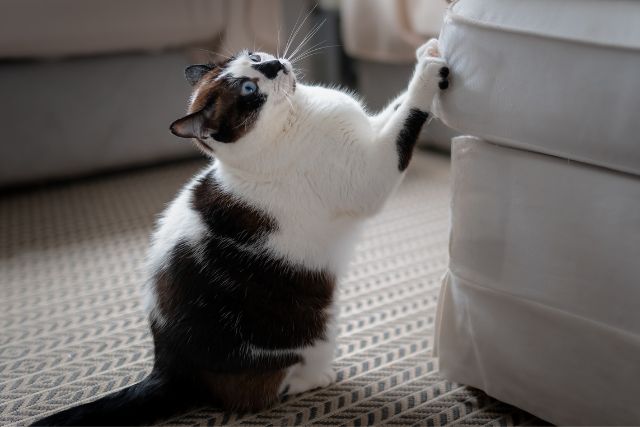
Why Do Cats Scratch Furniture? Tips for Preventing Destructive Scratching

Sphynx Cats: The Bald and Beautiful Feline Companions
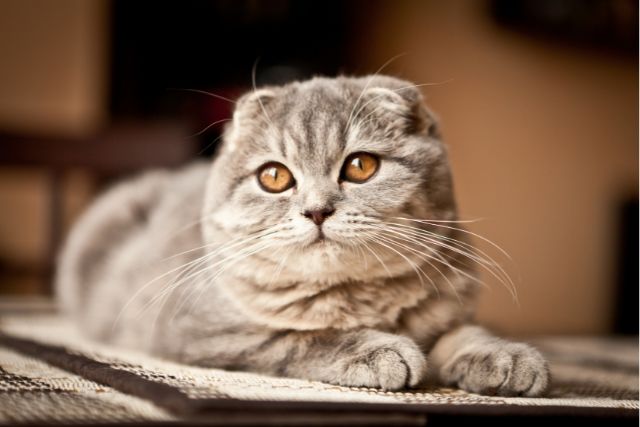
Scottish Fold Cats: The Cute and Quirky Breed with Folded Ears
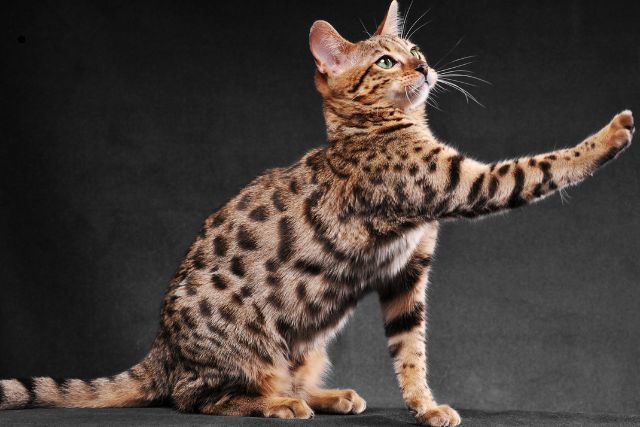
Bengal Cats: The Wild Side of Domestication

Ragdoll Cats: The Laid-Back Beauties of the Cat World
